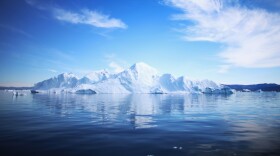
Richard Harris
Award-winning journalist Richard Harris has reported on a wide range of topics in science, medicine and the environment since he joined NPR in 1986. In early 2014, his focus shifted from an emphasis on climate change and the environment to biomedical research.
Harris has traveled to all seven continents for NPR. His reports have originated from Timbuktu, the South Pole, the Galapagos Islands, Beijing during the SARS epidemic, the center of Greenland, the Amazon rain forest, the foot of Mt. Kilimanjaro (for a story about tuberculosis), and Japan to cover the nuclear aftermath of the 2011 tsunami.
In 2010, Harris' reporting revealed that the blown-out BP oil well in the Gulf of Mexico was spewing out far more oil than asserted in the official estimates. That revelation led the federal government to make a more realistic assessment of the extent of the spill.
Harris covered climate change for decades. He reported from the United Nations climate negotiations, starting with the Earth Summit in Rio de Janeiro in 1992, and including Kyoto in 1997 and Copenhagen in 2009. Harris was a major contributor to NPR's award-winning 2007-2008 "Climate Connections" series.
Over the course of his career, Harris has been the recipient of many prestigious awards. Those include the American Geophysical Union's 2013 Presidential Citation for Science and Society. He shared the 2009 National Academy of Sciences Communication Award and was a finalist again in 2011. In 2002, Harris was elected an honorary member of Sigma Xi, the scientific research society. Harris shared a 1995 Peabody Award for investigative reporting on NPR about the tobacco industry. Since 1988, the American Association for the Advancement of Science has honored Harris three times with its science journalism award.
Before joining NPR, Harris was a science writer for the San Francisco Examiner. From 1981 to 1983, Harris was a staff writer at The Tri-Valley Herald in Livermore, California, covering science, technology, and health issues related to the nuclear weapons lab in Livermore. He started his career as an AAAS Mass Media Science Fellow at the now-defunct Washington Star in DC.
Harris is co-founder of the Washington, DC, Area Science Writers Association, and is past president of the National Association of Science Writers. He serves on the board of the Council for the Advancement of Science Writing.
Harris' book Rigor Mortis was published in 2017. The book covers the biomedicine "reproducibility crisis" �� many studies can't be reproduced in other labs, often due to lack of rigor, hence the book's title. Rigor Mortis was a finalist for the 2018 National Academy of Sciences/Keck Communication Award.
A California native, Harris returned to the University of California-Santa Cruz in 2012, to give a commencement address at Crown College, where he had given a valedictory address at his own graduation. He earned a bachelor's degree at the school in biology, with highest honors.
-
California plans to get 33 percent of its electricity from wind and solar power by 2020. But that will only work if the state can economically store some of the energy for release on cloudy, windless days.
-
Renewable energy has become a $220 billion a year industry. But to significantly slow climate change, the power of wind, solar and other renewable sources must vastly expand. Some say the tech breakthroughs needed are on the horizon, though a top economist sees a tougher road ahead.
-
With more and more carbon dioxide spewing from China, India and other rapidly growing nations, some people are asking why the U.S. should bear the expense involved in slashing its own emissions.
-
Scientists say Typhoon Haiyan is one of the strongest ever recorded, though limited measurements may prevent them from declaring it as the record holder. Still, the storm was devastating: "We had a triple whammy of surge, very high winds and strong rainfall," says one climate scientist.
-
If you commute to work, chances are you travel on roads or rails. A designer in Austin, Texas, wonders, "Why not up in the air?" In a nod to orangutans at the National Zoo who get around on wires 50 feet above the ground, designers see the potential for aerial mass transit.
-
Scientists are about to deliver another major assessment of climate change. The report from the Intergovernmental Panel on Climate Change involved hundreds of scientists from around the world and has left some of them wondering whether there's a more effective way to put the document together.
-
Some scientists have argued that so much gas leaks out during production that it is actually worse for the environment than coal. But a new nationwide study shows that methane leaks from natural gas production aren't as bad as some feared.
-
After several years planning the difficult mission, scientists successfully drilled through Antarctica's Pine Island Glacier. They were stunned by what they found, and worry global sea levels could be at risk.
-
"This is the real deal. Voyager 1 has finally reached interstellar space; the first time a spacecraft has been in the space between the stars," says one project scientist. Launched in 1977, the probe has been surveying the solar system.
-
About 160 years ago, before Europe began warming up, glaciers in the Alps started rapidly retreating. Now NASA scientists offer a possible explanation for this apparent paradox: Soot from the Industrial Revolution could have heated up the ice.









